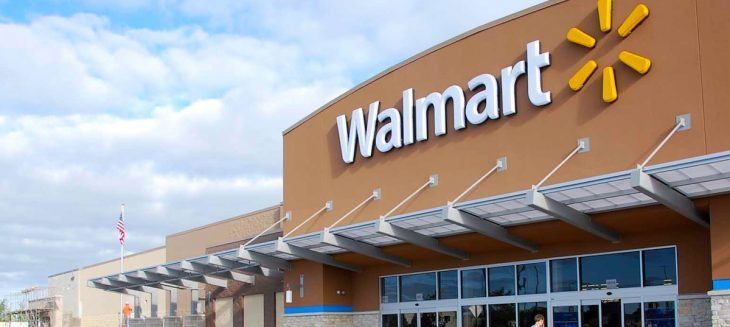Wal-Mart news briefs: Get off Amazon’s cloud, bye-bye price matching, big ad spender
by June 27, 2017 7:03 pm 1,586 views

Wal-Mart made headlines this past week for various reasons from discontinuing its price matching program in Minnesota to telling vendors to abandon Amazon’s cloud service.
The retailer was also dubbed as the biggest spender on paid search advertising over the past year among its grocery competitors. Wal-Mart Stores outspent Amazon on paid search advertising for grocery more than six times during the past year, according to a report from AdGooroo, a subsidiary of Kantar Retail.
Wal-Mart doled out $858,000 in paid search advertising from June 2016 to May 2017, up exponentially from $51,000 it spent in the prior year. The uptick in spending is not surprising given the retailer’s push to promote its online grocery pickup service which continues to expand to 1,000 store by the end of this year.
https://www.adgooroo.com/resources/blog/grocery-paid-search-ads-amazon-whole-foods/
Jet.com spent another $82,000 since it was acquired by Wal-Mart in September. Last year Jet.com spent just $3,000. Amazon ranked ninth in overall spending at $133,000 and Whole Foods spent just $51,000. The reports states Amazon doesn’t have to spend as much given its overall strong search presence, which should be worrisome to Wal-Mart. In last year’s report Amazon spent $72,000, a good bit more than Wal-Mart.
Other grocery competitors also spent more this past year:
• Aldi ranked second to Wal-Mart spending $441,000, compared to $40,000 a year ago. This bulk of that spending came in the spring as Aldi began ramping up its online presence ahead of its planned U.S. expansion.
• Kroger spent $283,000, over 23 times what it spent in the prior year.
• HEB spent $139,000, compared to $16,000
CLOUD CLASH
Wal-Mart and its chief rival Amazon clashed recently regarding tech vendors using the other’s cloud services for online hosting. Wal-Mart spokesman Dan Toporek said the retailer is pushing for alternate means, but ultimately the choice lies with the vendors.
“Our vendors have the choice of using any cloud provider that meets their needs and their customers’ needs,” he said.
Analysts said Wal-Mart is not being a bully because no company wants confidential data compromised or accidentally landing in their rivals hands.
Amazon is seen as a dominant player in cloud-based storage with its Amazon Web Services (AWS) program which garners 44% of the market, according to Synergy Research.
Amazon has said Wal-Mart’s view of AWS is misguided. While that might be true, Toporek said, “It shouldn’t be a big surprise that there are cases in which we’d prefer our most sensitive data isn’t sitting on a competitor’s platform.”
DITCHING AD MATCH
Wal-Mart Stores is the largest U.S. grocery chain but it operates much like a regional or local competitor in many cases. Earlier this month Wal-Mart discontinued its in-store price matches in Minnesota adding to the roughly 800 stores that no longer provide that service at the checkout.
The move to ditch ad match at the register is not new but the retail giant sought to simplify the process in prior years by not requiring customers to show the competitor’s ad. Savings Catcher is a also a way Wal-Mart checks against other prices of local competitors. Savings Catcher is still an option for shoppers in Minnesota, however the app does not compare prices on produce. Analysts estimate only 5% of consumers use ad match at the register.
The price-match policy came back into vogue during the recession, according to Marshall Cohen, analyst with NPD Group. He said even if customers don’t ask for a price match, knowing it’s an option makes shoppers feel retailer’s are fair.
Target, a big competitor in the Minnesota market, said it remains committed to price matching.
